Fault in truck crash cases with no witnesses or video can be established through evidence of lug nut pattern damage and vehicle transfer.
He said. She Said.
Imagine that you are cruising north on Interstate 95 with the windows down and your favorite playlist is blaring. You’ve not a care in the world as you are within minutes of your destination for your long weekend. Imagine too that a box truck or a tractor-trailer is next to you, and you are both traveling at similar speeds relative to each other, or perhaps one of you is passing the other. Suddenly, the side of your car collides with the truck, causing you to spin and come to a stop. There are no witnesses and no video of the crash.
There is no physical evidence in the roadway to establish which lane the collision occurred in. You are adamant you were in your designated travel lane, and you tell the investigating trooper that the truck driver came into your lane. The truck driver is just as adamant and tells the investigating trooper that you drifted into the truck driver’s lane. The classic “he said, she said.”
Crash report shows fault as 50/50
The investigating trooper is unable to determine fault and issues a crash report stating as much. The insurance adjusters chalk it up, at best, as a 50/50 when it comes to fault and repairing your car. At worst, the adjuster for the trucking company accepts only the truck driver’s version and refuses to pay for your car repairs and any resulting injuries or damages you’ve suffered. You may be forced into a long and expensive legal process to establish fault on the part of the truck driver.
Determining fault in a sideswipe or lane change accident can be complicated, despite laws on using turn signals and merging. Blind spots, yielding, and speeding can further complicate matters. Accidents can happen even when following guidelines, making it difficult to sort out the details later. This is where the location and type of damage on the vehicles can frequently provide indisputable clues.
But damage to vehicles tells the true story.
Lug pattern damage can be analyzed to reconstruct a crash using established engineering methods and protocols. Similarly, in other sideswipe or lane change collisions, engineers are often able to reconstruct a crash – or at least determine relative speeds of involved vehicles – by assessing the vehicle’s crush damage, paint transfer, rear-to-front damage or front-to-rear damages (indicative of which vehicle was passing), or a rotating tire sidewall’s rubber transfer. Such evidence on the body of the vehicles or on their wheels or tires can go a long way in establishing fault where there is no other physical evidence and where the “he said, she said” versions of what happened would otherwise hinge on which driver is most credible.
Illustration of a recent case handled by Romano Law Group
As a brief illustration using one recent sideswipe truck crash case handled by our firm’s truck crash attorneys, the images below depict lug pattern damage from a truck’s front right steer wheel lugs that transferred to the driver side of our client’s vehicle. There was no video of the crash and there were no witnesses other than the drivers, and both had conflicting versions of how the crash occurred and in which lane the impact occurred. Neither vehicle was available for inspection nor event data recorder (EDR) download. However, we were fortunate to have post-crash photos of both vehicles showing lug pattern damage, tire rubber transfer, and some crush damage.
The crash reconstruction engineers we retained utilized the photographs to model the damage patterns and help reconstruct the collision. In doing so, the experts were able to determine the relative speeds of the vehicles, the principal direction of force, the change in velocity of the vehicles, and the nature of the impact between the vehicles. Sound engineering principles and reconstruction methods supported this evidence, and it proved to be invaluable in supporting our theory of fault and our client’s version when considering the sworn testimony of both drivers.






Physical evidence tells the story.
Fault can be determined even without witnesses or video evidence in a sideswipe or lane change collision. The physical evidence found on the vehicles involved in a crash can often provide insight into what happened. Experts in crash reconstruction can usually determine fault or at least support the version of events that is most supported by the physical evidence, in cases where there are conflicting accounts. Crash reconstruction engineers can utilize the physical evidence to make reliable determinations about relative speeds, changes in velocity, and the principal direction of force. The physical evidence can almost always be utilized in conjunction with the testimony of the drivers to help determine fault.
Evidence must be preserved quickly.
The key takeaway here? If you have been involved in a “he said, she said” sideswipe collision or lane change collision and there no witnesses or video, it is not “game over” in terms of determining fault. However, to the extent practicable, the condition of the damage to the vehicles must be preserved so that the vehicles can be inspected quickly before repairs are made. At the very least, the damage to the vehicles must be photographed or video-recorded as contemporaneously as possible to the time of the collision. Remember, the minutes and hours after a truck crash are critical.
If you are involved in such a sideswipe or lane change collision with a truck or with another car, it is imperative that you act quickly by retaining an experienced truck crash lawyer who can help ensure preservation of the evidence by hiring the right investigators and experts who can immediately collect and preserve the physical evidence from the vehicles. Having an experienced and skilled truck crash lawyer onboard to represent you can be the difference-maker in establishing fault in a contested “he said, she said” sideswipe or lane change collision.
Romano Law Group has decades of experience and results.
Romano Law Group has a skilled team with years of experience handling truck and motor vehicle accidents, including sideswipe and lane change collisions. We have also established protocols for rapidly deploying investigators and experts who are well-versed in preserving evidence and determining fault in sideswipe and lane change crashes. If you have been involved in a sideswipe or lane change collision, Romano Law Group stands ready to assist.
Authored by Todd Romano

The post Determining fault in truck crash cases caused by improper lane change with no witnesses appeared first on Romano Law Group.




